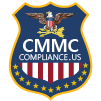Role-Based Access Control (RBAC) is essential for protecting Controlled Unclassified Information (CUI) and meeting CMMC requirements. It ensures that users access only the information they need, and nothing more. Here’s how to implement RBAC effectively.
1. Define Roles by Function and CUI Access
Start by mapping roles to specific job duties and the level of access required to CUI. For example, a CUI Administrator manages permissions, a Technical Reviewer may only view CUI, and a Subcontractor Coordinator might access onboarding-related data. This functional approach supports CMMC requirements AC.1.001 and AC.2.009 by limiting access to authorized users and managing data flow.
2. Enforce RBAC with Technical Controls
Policies alone are not enough. Use tools like Active Directory groups to map access, enforce multi-factor authentication for all CUI users, and apply cloud-specific controls such as AWS IAM or Azure RBAC. CUI access should be logged, monitored, and immediately revoked when roles change or users leave the organization. These steps help satisfy requirements like PE.1.132 and IA.1.076.
3. Review and Adjust Access Regularly
RBAC needs ongoing oversight. Review access at least quarterly and whenever roles, contracts, or projects change. Log all access changes and test your controls with internal reviews. Keep role definitions and permissions updated in your System Security Plan (SSP) and access policy.
Key Takeaway
RBAC is a critical control for protecting CUI and proving CMMC compliance. When done right, it ensures that only the right people have access to sensitive information—and only when they need it.
For more guidance, visit www.cmmccompliance.us/contact-us.
The Brea Networks Cyber Security Compliance Team




